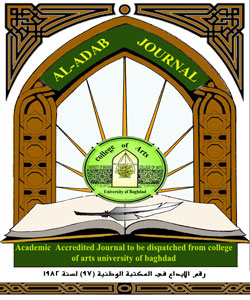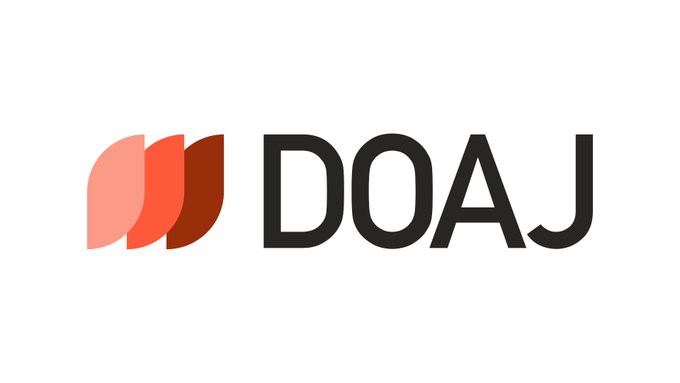ال التباين اللهجي في العربية المعاصرة
DOI:
https://doi.org/10.31973/aj.v1i135.821الكلمات المفتاحية:
التباين اللهجي، اللهجة العربية، اللبس، المستويات اللغوية، المستوى المعجميالملخص
ليست الغايةُ من هذه الدراسةِ تحرّي ألفاظَ اللهجةِ أملاً في تجلية حُسنها؛ إذ يُجمع أغلب المتكلمين بالعربية - المختصين منهم وغير المختصين – أن في الفصحى رونقًا وبهاء يفوق غيرها من مستويات الخطاب، ويعكس رقيّ المتحدّث بها، بل المبتغى هو استشرافُ ظاهرةٍ لغويةٍ متمثلة في "التباين اللهجي" تؤذن بتخلّق لبسٍ دلالي؛ وذلك قصدَ توخّي الحيطة والاحتراز من تعمية المراد، فيُفهم على غير الوجهِ الذي قيلَ من أجله في لغة التداول اليومي، وتختصّ هذه الدراسة بظاهرةِ التباينِ في اللهجاتِ العربيةِ المعاصرة، وهي تصبُّ في ثلاثة مباحث، أمّا المبحث الأول فقد كان مضماره تجليةَ مفهوم التباينِ اللهجي، والعوامل التي أدّت إلى اختلاف اللهجاتِ وتشعّبها دون قصد أصلها وتطوّرها، وإنما استشراف العلة التي تُفسّر انحرافَ القولِ الذي أصابَ متكلّم العربية ممّا أدى إلى تباينٍ بين اللهجات، ومواضعها في المستويات اللغوية. وأمّا المبحث الثاني ففي ظاهرة اللبس في اللغة، بإعراب حدّ اللبس لغةً واصطلاحًا، والتفريق بينه وبين أشباهه من الألفاظ، وهي الخلط والغموض والوهم واللغز، والعلاقةَ بين اللبس واللهجة، والمحتكم في الإبانة عن اللبسِ الحاصل في اللهجة، والمواضع المرشّحة لتخلّق اللبس في المستويات اللغوية، وتحديدًا في المستوى المعجمي، الذي هو محلّ عِناية الدّراسة.وأمّا المبحث الثالث فرَصد بعض الأحداث الكلاميّةِ التي تكشف أثرَ تباينِ اللهجات في التواصل من خلال ضرب أمثلة من واقعِ الحياة اليومية أفضتْ إلى لبسٍ معجمي، استعراضًا دون استفاضة في التحليل.
التنزيلات
المراجع
Abdelkader, T. (2013). The characteristics of the contemporary language of the Algerian folk poem. The egg area is typical. Journal of Studies and Research, University of Djelfa.
Akl, M. (2019, 12 21). The rules of the Levantine dialect. Retrieved from http://www.odabasham.net/%D9%86%D9%82%D8%AF-%D8%A3%D8%AF%D8%A8%D9%8A/58053-%D9%82%D9%88%D8%A7%D8%B9%D8%AF-%D8%A7%D9%84%D9%84%D9%87%D8%AC%D8%A9-%D8%A7%D9%84%D8%B4%D8%A7%D9%85%D9%8A%D8%A9
Al-Abboudi, M. b. (1978). The dialect of the People of Qassim. Al-Yamamah Research, Translation and Publishing House.
Al-Abdan, A. N. (2018). Acoustic Phenomena in the Kuwaiti Dialect, Master's Thesis. Jordan: Al-Bayt University.
Al-Anati, W. A. (2000). Contrast and its impact on the formation of Arabic linguistic theory, PhD thesis. Jordan: University of Jordan, Graduate School.
Al-Askari, A. (2004). Language differences. (I. a. Salim, Ed.) Cairo: Dar al-Alam of Culture, Publishing and Distribution.
Al-Aweid, A. (2017, 11 26). For a linguistic sect. Retrieved from https://www.ra2ej.com/%D9%85%D8%A7-%D9%87%D9%88-%D8%A7%D9%84%D9%81%D8%B1%D9%82-%D8%A8%D9%8A%D9%86-%D8%A7%D9%84%D9%84%D9%87%D8%AC%D8%A9-%D9%88%D8%A7%D9%84%D9%84%D8%BA%D8%A9-%D9%88%D8%A7%D9%84%D9%84%D9%83%D9%86%D8%A9%D8%9F-337061.html
Al-Dulaimi, H. H. (2013). The gift is in Arabic philology (Vol. 1). Jordan: Dar Ghida Publishing and Distribution.
Al-Estarabadi, R. (1982). The explanation of Shafia Ibn al-Hajb. (s. a.-H.-Z. Investigation, Ed.) Lebanon: Scientific Books House.
Al-Farahidi, H. (no date). Eye dictionary. (I. b.-M. al-Samarrai, Ed.) Beirut: Al Hilal Library.
Al-Ghariba, A. A. (2008). Sound phenomena in the dialect of Ajloun. Historical descriptive study. Journal of Humanities and Social Sciences Studies.
Al-Hajj, M. (2017, 11 4). Learn the meaning of words before using them in a non-home country. Retrieved from http://www.aafaq.org/masahas.aspx?id_mas=3821,
Al-Musa, N. (1987). The issue of the transition to classical in the modern Arab world (Vol. 1). Lebanon: Al-Fida'i Publishing and Distribution House.
Al-Razi Al-Language, A.-H. (1993). The friend in the jurisprudence of the Arabic language and its issues and the age of the Arabs in her words (Vol. i1). (O. F. Al-Tabaa, Ed.) Beirut: Knowledge Library.
Al-Shalawi, B. B. (2011). Confusion.. Its causes and ways of avoiding it in pure reversion. Um al-Qura University Journal of Linguistics and Literature.
Al-Suyuti, J. (1986). Flowering in linguistics and its types. (M. A.-B. Investigation by Mohammed Gad al-Mawla, Ed.) Beirut: Modern Library.
Al-Thaalbi, A. (2000). Philology and The Secrets of Arabic. (Y. Al-Ayoubi, Ed.) Beirut: Modern Library.
Anis, A. (1970). The language between nationalism and universalism (Vol. 1). Egypt: Dar Al-Maaref.
Arar, M. A. (2003). The phenomenon of confusion in Arabic. The controversy of communication and separation (Vol. 1). Jordan: Dar Wael Publishing and Distribution.
author, W. (2019, 12 22). Al-Tonguei Al-Sussawa's efforts in the study of Yemeni dialects. Retrieved from https://almakha.net/news_details.php?sid=154
author, W. (2020, 1 18). Miniaturization in the Libyan dialect. Retrieved from https://nisreanismael.wordpress.com/2016/09/18/%D8%A7%D9%84%D8%AA%D8%B5%D8%BA%D9%8A%D8%B1%D9%8F-%D9%81%D9%8A-%D8%A7%D9%84%D9%84%D9%87%D8%AC%D8%A9%D9%90-%D8%A7%D9%84%D9%84%D9%8A%D8%A8%D9%8A%D9%91%D8%A9/
author, W. (2020, 1 18). The Tunisian dialect. Retrieved from http://lahajat.blogspot.com/2015/08/blog-post_57.html
Cup, K. G. (2017). The difference of the dialect and alternative formulas in directing abnormal readings in the light of contemporary linguistics in ibn Jani's book, Doctoral Thesis. Jordan: Yarmouk University, Faculty of Arts.
Fariha, A. (1989). Dialects and their way of studying (Vol. 1). Beirut: Dar al-Jil.
gomaa, M. L. (1926). The observer (Vol. 1). Egypt: Excerpt and Al-moqatam Press.
Hilal, A. G. (2003). Dialects are evolving and evolving. Wahba Library: Cairo.
Ibn Manzoor, J. a.-D. (1414H). The tongue of the Arabs (Vol. 3). Beirut: Dar Sader.
Jabri, A. (1428H). Arab dialects in the Qur'an. Beirut: Scientific Books House.
Janafara, S. (2016). Arabic and dialect challenges in Algeria, some dialects of the Algerian East as a model, a complementary note for a master's degree. Algeria: Arab University Ben Amhidi-um Bouaqi.
Kamal Al-Deen, H. A. (1993). Study in phonology (Vol. 2). Cairo: Library of Literature.
Mardini, S. (1970). Colloquial and classical dialects. Al-Arabiya Language Complex Magazine, Damascus.
Poor, S. T. (2018). Qatouf of arabic language, dialects and lexicon (Vol. 1). Jordan: Dar Kunooz Al Marefa for Publishing and Distribution.
Qassim, A. A.-S. (2006). Dictionary of dialect in Sudan. Journal of Shandi University.
Shata, J. M. (2014). The sound development in the dialect of the people of Qassim in the light of the theory of ease and facilitation. Journal of the Faculty of Islamic and Arab Studies Benin, Al-Azhar University.
Sherbetov, G. (1984). Some of the characteristics of the language of communication between classical language and dialects in the Arab world. Magazine of the Arabic Language Complex in Cairo.
Staty, E. (2010). Introduction to Coptic folklore. Cairo: General Authority for Cultural Palaces.
Youssef, M. F. (2020, 1 18). Evolution in compositions between classical and colloquial. Retrieved from https://ghafekerwabqazeker.blogspot.com/2009/06/blog-post_07.html
Zamili, M. K. (2014). The security of confusion in The Arabic language. Lebanon: Scientific Books House.
التنزيلات
منشور
إصدار
القسم
الرخصة
:حقوق الطبع والنشر والترخيص
بالنسبة لجميع البحوث المنشورة في مجلة الآداب، يحتفظ الباحثون بحقوق النشر. يتم ترخيص البحوث بموجب ترخيص Creative Commons CC BY 4.0 المفتوح ، مما يعني أنه يجوز لأي شخص تنزيل البحث وقراءته مجانًا. بالإضافة إلى ذلك ، يجوز إعادة استخدام البحث واقتباسه شريطة أن يتم الاستشهاد المصدر المنشور الأصلي. تتيح هذه الشروط الاستخدام الأقصى لعمل الباحث وعرضه.
:إعادة إنتاج البحوث المنشورة من الناشرين الآخرين
من الضروري للغاية أن يحصل الباحثون على إذن لإعادة إنتاج أي بحث منشورة (أشكال أو مخططات أو جداول أو أي مقتطفات من نص) لا يدخل في نطاق الملكية العامة أو لا يملكون حقوق نشرها. يجب أن يطلب الباحثون إذنًا من مؤلف حقوق النشر (عادة ما يكون الناشر).
يطلب الإذن في الحالات التالية:
بحوثك الخاصة المنشورة من قِبل ناشرين آخرين ولم تحتفظ بحقوق النشر الخاصة بها.
مقتطفات كبيرة من بحوث أي شخص أو سلسلة من البحوث المنشورة.
استخدم الجداول والرسوم البيانية والمخططات والمخططات والأعمال الفنية إذا لم يتم التعديل عليها.
الصور الفوتوغرافية التي لا تملك حقوق لنشرها.
لا يطلب الإذن في الحالات التالية:
إعادة بناء الجدول الخاص بك مع البيانات المنشورة بالفعل في مكان آخر. يرجى ملاحظة أنه في هذه الحالة يجب عليك ذكر مصدر البيانات في شكل "بيانات من ..." أو "مقتبس من ...".
تعتبر عروض الأسعار القصيرة معقولة الاستخدام العادل ، وبالتالي لا تتطلب إذنًا.
الرسوم البيانية ، الرسوم البيانية ، المخططات ، الأعمال الفنية التي أعاد الباحث رسمها بالكامل والتي تم تغييرها بشكل ملحوظ إلى درجة لا تتطلب الاعتراف.
الحصول على إذن
لتجنب التأخير غير الضروري في عملية النشر ، يجب أن تبدأ في الحصول على أذونات في أقرب وقت ممكن. لا يمكن لمجلة الآداب نشر بحث مقتبس من منشورات أخرى دون إذن.
قد يمنحك مالك حقوق الطبع والنشر تعليمات بشأن شكل الإقرار الواجب اتباعه لتوثيق عمله ؛ بخلاف ذلك ، اتبع النمط: "مستنسخ بإذن من [المؤلف] ، [كتاب / المجلة] ؛ نشره [الناشر] ، [السنة]." في نهاية شرح الجدول ، الشكل أو المخطط.
.jpg)























